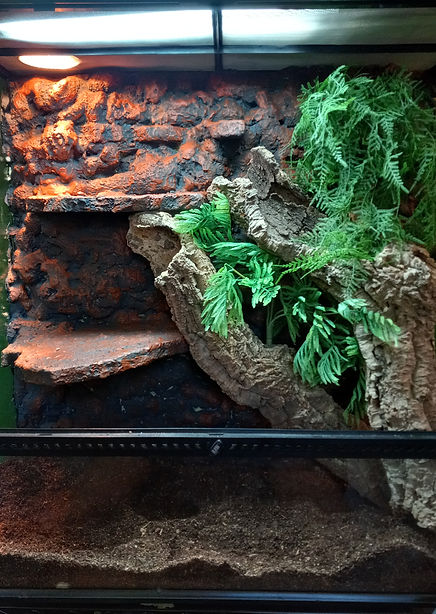Black Headed Monitors
The Black-headed monitor (Varanus tristis tristis) is known for its shy and reclusive nature. However, with the right socialization, these monitors can transform into bold and personable companions. They offer a rewarding experience for pet keepers with moderate to advanced experience, showcasing their active and engaging personalities. If you're looking for a unique pet that can be very interactive, the Black-headed monitor may be the perfect choice for you.
Description
Black-headed monitors begin their journey as vibrant hatchlings, showcasing bright colors that captivate any observer. As they mature, their tails and heads transform into a solid black, with some localities displaying black tails paired with heads in hues ranging from red to rust. These remarkable lizards are perfectly adapted for an arboreal lifestyle, boasting powerful legs, well-developed claws, and long tails that provide essential balance in their treetop habitats. Their unique adaptations make them fascinating creatures to study and admire.
Size
As far as dwarf monitors go the Black-headed monitor is on the larger scale of the dwarf monitor (Odatria) subgenus. Adult males can attain sizes of 20 - 31 inches in length. While adult females are typically smaller only reaching lengths between 17 - 24 inches. With this size range Black-headed monitors are a great size for most people to handle without worrying about harm to themselves or the animal.

Range
Black-headed monitors are primarily found in Western Australia, while their smaller sub-species, the Freckled monitor (Varanus tristis orientalis), inhabit eastern Australia. These fascinating reptiles thrive in diverse environments, including forests, scrublands, woodlands, and deserts. They often seek refuge in tight spaces, such as tree hollows and rocky crevices, showcasing their adaptability to various habitats.
Heating
&
Lighting
As a diurnal arid species Black-headed monitors require high basking temperatures and High Output UVB. Black-headed monitors bask in temperatures ranging from 120℉ to 140℉, with an ambient temperature maintained between 80℉ to 90℉. To ensure your monitor receives adequate UVB exposure, we recommend Arcadia's Dragon 14% UVB High Output T-5 bulbs. This will allow your monitor to synthesize calcium properly preventing metabolic bone disease (MBD). Create a natural light cycle that mirrors their environment by allowing for 12 hours of light followed by 12 hours of darkness. This careful balancing of heat and UVB is essential for the vitality of your monitor.


Nutrition
At Varanid Kingdom LLC, we ensure that all our monitors, including our Black-headed monitors, receive a diverse and nutritious diet. Our dedicated team provides them with gut-loaded crickets, dubia roaches, grasshoppers, and silkworms, all of which are eagerly accepted. We believe that a varied diet is essential for their health and vitality. Each meal is carefully curated to meet their needs and promote their well-being.

Humidity
Requirements
Black headed monitors should have varying humidity levels throughout their enclosure. The goal is to replicate the same micro climates that these animals have access to in the wild. A range from 50% - 70% humidity should be available to them throughout their enclosure. This is achievable by providing a humid hide or area within the enclosure where the humidity can be slightly higher to allow the monitor to regulate its hydration as needed. These humidity levels can be maintained by misting the enclosure regularly, using a deep substrate layer, or providing a good sized water bowl.
Habitat
&
Enrichment
Create a comfortable and stimulating environment for your Black-headed monitor with an enclosure measuring 4'L x 2'W 4'H. Incorporate a 3D background, multiple climbing shelves, and cork hollows to enhance their habitat. Adding plenty of branches provides them with necessary climbing opportunities. To promote natural foraging behavior, consider including live plants and leaf litter, ensuring your monitor feels right at home.


Life Span
Black-headed monitors can thrive for 15 years with the right care and husbandry. Providing a suitable habitat and balanced diet are essential for longevity. By maintaining optimal conditions, you can ensure a happy and healthy life for your Black-headed monitor.